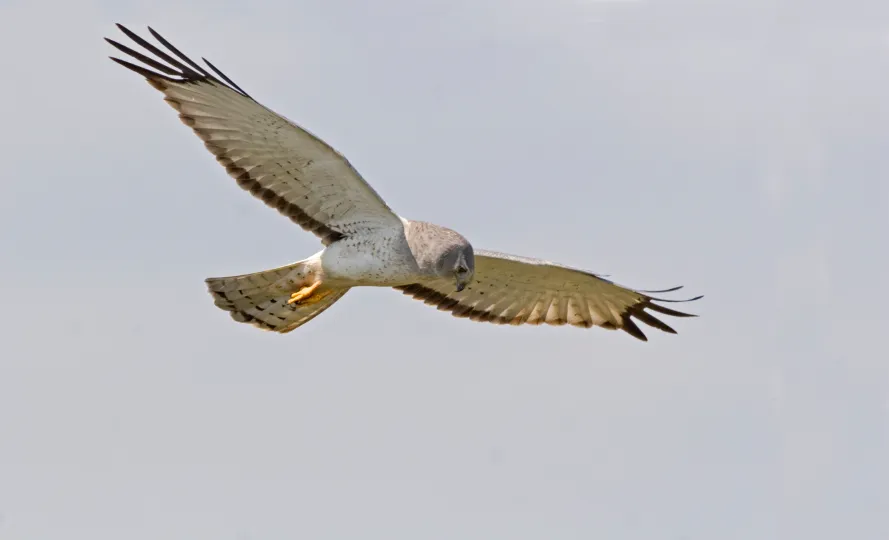
England’s most endangered breeding bird – the hen harrier – has managed to raise 18 chicks from six nests in 2015, Natural England has confirmed. This makes 2015 the best year for the species since 2010. The nests range from Lancashire to Northumberland with one in County Durham.
The success is the result of a partnership between Natural England, RSPB, Moorland Association and the Forestry Commission who have worked to prevent predation and illegal persecution of the species.
Rob Cooke, Natural England’s Director of Terrestrial Biodiversity, said: “Six nests is a small number, but it is actually more than we have seen in total over the past three years – which is a significant and positive step forward. Obviously we need to see many more pairs of these iconic birds nesting successfully and we are actively looking at how we and our partners can build on this positive outcome in the future.”
Chairman of the Moorland Association, Robert Benson, said: “Grouse moor managers have played a significant role in protecting nests and this year's success, which is very welcome. However, we need to do more for hen harriers. With government help, via a Hen Harrier Action Plan, numbers and the spread of nests next year could be even better, buffering the effects of poor weather and predation."
Fledged chicks are being fitted with satellite tags so their progress can be closely monitored.
RSPB Board spokesman Stuart Housden said: “Whilst we’re very pleased some hen harrier chicks have fledged successfully this year, we must recognise there remains a long way to go to secure the species’ future as a breeding species in England. Harriers are still absent from vast swathes of suitable habitat, and are highly vulnerable to illegal persecution.
For more information:
Natural England’s report ‘A future for the hen harrier in England’ provides a summary of information gathered during an intensive Hen Harrier Recovery Project carried out by Natural England and its predecessors between 2002 and 2008.

